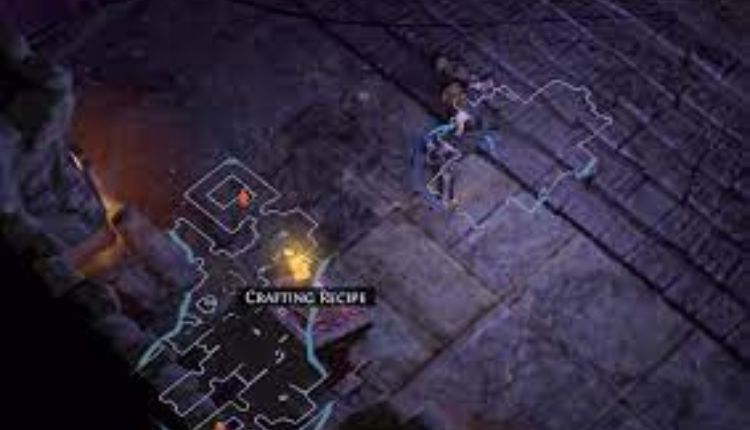Path Of Exile Crafting Tutorial
The crafting system in Path of Exile offers players many ways to improve their gear. From basic transmutations to alterations, there are plenty of options. Item level is crucial for crafting, as it dictates the pool of implicit modifiers (like prefixes and suffixes) an item can use. The craft bench in your hideout is the most common way to improve items.
Crafting
Crafting in path of exile is a complex system that allows players to create powerful and unique items. It is important to understand the mechanics of crafting before beginning any endeavor. This tutorial will provide an overview of the crafting system and its many features. It will also cover the different components of an item, including its base stats and modifiers. This knowledge will help players better plan their crafting process and make informed decisions. Base stats are a key component of crafting in path of exile, as they dictate the implicit modifiers that can appear on an item. These modifiers are crucial to the success of a build, and can determine how well an item performs in battle. The most important aspect of base stats is the item level, which dictates the pool of potential modifiers. The higher the item level, the more likely it is that a specific modifier will roll.
The next major component of crafting in path of exile is the ability to improve items through various methods. These methods include the use of crafted gems, which can be used to add more powerful implicit modifiers to an item. Other methods of improving an item include reforging and using gem enhancers. The crafted gem system is an essential part of the game, and can be a valuable tool for any player. Adding crafted mods to an item can increase its power dramatically, as it allows players to customize their equipment and create powerful combinations that are otherwise unavailable. The crafted mods available in the game are categorized by their type, and each type has its own benefits and drawbacks. These crafted mods can be obtained through a variety of sources, such as the Fossil and Relic crafting systems.
Other key aspects of crafting in path of exile include the use of various orbs and currency to craft items. Orbs can be used to reroll the mods of an item, and can even reroll the entire item. This can be useful if an item has certain undesirable mods, or if a player wishes to change the mods of an existing item.
Currency
Currency is the backbone of crafting, allowing for the modification and enhancement of your equipment. Each item can be modified in a variety of ways, either through basic transmutations (turning white items into magic), or more complex alterations (allowing the addition of random modifiers to existing gear). The most important types of currency are Chaos and Exalted Orbs, both of which can be traded for powerful equipment. They also play a big role in player trading, with rare orbs often selling for several times their base price.
While a few other currencies exist, most are only found through in-game events or purchases from various town vendors. Almost all of these currencies can be used to buy new recipes for your crafting bench. This means that it’s possible to build nearly every item in the game, but it can take a lot of time and effort to do so. Unlike other games, in which crafting can be done at any level, Path of Exile’s economy works in a way that most currency items lose value over time. The best approach is to hold onto a large amount of each currency at a given time, and only sell when you have enough for a significant profit.
If you’re new to the game, it can be hard to tell what is worth holding on to and what can safely be sold. The easiest way to determine this is to look at the prices for similar items on trade. Generic low to mid-tier items will usually be listed on trade for significantly less than their expected crafting cost.
Some currencies should be saved for special purposes, such as rerolling maps or preparing an endgame build. Others should be sold as soon as possible, such as the shards of Kalandra, Harbinger’s Orb, and Orb of Horizons. This can help new players save money and avoid unnecessary purchases, while still gaining the benefits of those currencies. An experienced player will know which items to save and which to sell based on their experience and current goals. This knowledge can be gathered through online resources like reddit and class forums, as well as from watching the progression of high-level players on streamers.
Modifiers
Modifiers in Craft of Exile are what give items their unique properties. They can be used to improve an item’s stats, buffs, or skills. They can be found on items, monsters, strongboxes and areas in the game. They can also be created or improved by combining other modifiers through the crafting table. The different types of modifiers are categorized into groups based on their effects. Each group can only contain one type of modifier at a time. This makes it easy to identify which modifiers are compatible with each other. This system allows for a much more complex item crafting process in the game and creates a tiered set of modifiers that allow for progression in different areas.
Each item has a set of implicit and explicit modifiers that are prefixed or suffixed on the item. The Implicit Modifiers include the base modifiers of an item, such as the X% Spell modifier of wands or the Life modifier of Coral Rings. The Explicit Modifiers are grouped into two categories – prefixes and suffixes. The prefixes are the first group of crafted modifiers that can be added to an item while the suffixes are the last – and most powerful – crafted modifiers that can be added to items. Some of the Explicit Modifiers are considered to be “local”, meaning that they only apply to attacks made using the item on which they are attached. These affixes cannot be scaled by other local increases, but do provide an additional layer of customization to an item.
A few of the Explicit Modifiers are also known as “influenced”, meaning that they can be upgraded through the use of an Influence Orb. This orb upgrades the influenced modifiers to higher-tiered variants, but at a cost of removing another random influenced modifier. This is a costly method of item upgrading, but can be an efficient way to upgrade an item to your desired configuration. Certain crafting methods do not respect this concept and will reforge an item with a random set of explicitly unblocked mods, such as the Regal Orb. Additionally, the Orb of Scouring and Divine Orb both reroll the values of existing explicit mods but they do not change the mod tier.
Support Gems
As your character progresses in the game, you will acquire gems from quest rewards and loot drops. These are then inserted into items, either as an active skill gem or a support gem. While skill gems grant specific abilities to the player, support gems can make those abilities much more powerful. Obtaining and connecting these gems together can be a daunting task, as they are incredibly rare. However, these gems can drastically alter how your character kills enemies. For example, if an active skill gem shoots one fireball, a supported gem can multiply that effect and turn it into five fireballs. They can also increase the amount of damage that a skill does or modify its effects in other ways.
The same way that skill gems level up and have attribute requirements, support gems can do the same. The difference is that while a support gem needs to be linked with an active skill gem, it doesn’t need to be the same color. In fact, two different support gems can influence the same skill, and the stronger one takes precedence. As with skill gems, some support gems will only work with certain types of skills. You can tell which supports modify a skill by looking at the gem tag, which will be written in green to indicate what kind of effect it has on a given skill. However, this is not a reliable indicator of what the gem does, as gem tags can be misleading.
Conclusion
A great place to experiment with these gems is the Divine Font, which can randomly transfigure a skill or support gem into another one of the same type and attributes. This can be an effective way to test out new builds and find combinations that let you scythe through the huge hordes of monsters in the game. You can also exchange some of your skill and support gems for corrupted implicit modifiers at the item crafting altars found throughout the Eternal Labyrinth. These mods can change the way your skill works, such as increasing the amount of damage that your weapon does or reducing its mana cost.




